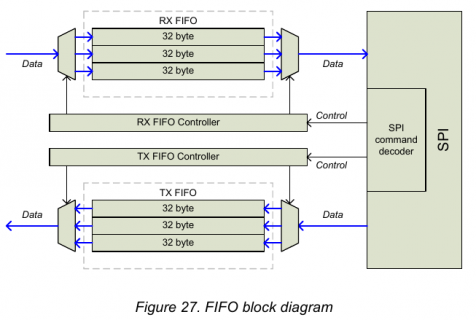Simultaneous SPI comms for a Full-Duplex System using 2 Half-Duplex RF modules.
I have a Teensy3.2 but it has only one SPI port. Whereas Teensy 3.5 and Teensy 3.6 have 3 SPI ports. On the kickstarter page this is what is mentioned "3 SPI Ports (1 with FIFO)", can anyone please explain what exactly that means?
Lets say i want to use the 2.4GHz NRF24L01+ modules. If i use only one of them then i get a Half-Duplex system. Even if i use 2 of the modules but the hardware SPI is only one, then also i get a Half-Duplex system. But I wanted to make a Full-Duplex system.
I wanted to know if there is support for multiple simultaneous SPI communication on either Teensy 3.5 or Teensy 3.6. If not, then is it still practically possible to develop firmware that achieves simultaneous multiple SPI communications because there are 3 SPI ports available. If yes, then i would be willing to buy new Teensys and work on the development of this functionality.
I have a Teensy3.2 but it has only one SPI port. Whereas Teensy 3.5 and Teensy 3.6 have 3 SPI ports. On the kickstarter page this is what is mentioned "3 SPI Ports (1 with FIFO)", can anyone please explain what exactly that means?
Lets say i want to use the 2.4GHz NRF24L01+ modules. If i use only one of them then i get a Half-Duplex system. Even if i use 2 of the modules but the hardware SPI is only one, then also i get a Half-Duplex system. But I wanted to make a Full-Duplex system.
I wanted to know if there is support for multiple simultaneous SPI communication on either Teensy 3.5 or Teensy 3.6. If not, then is it still practically possible to develop firmware that achieves simultaneous multiple SPI communications because there are 3 SPI ports available. If yes, then i would be willing to buy new Teensys and work on the development of this functionality.
Last edited:


